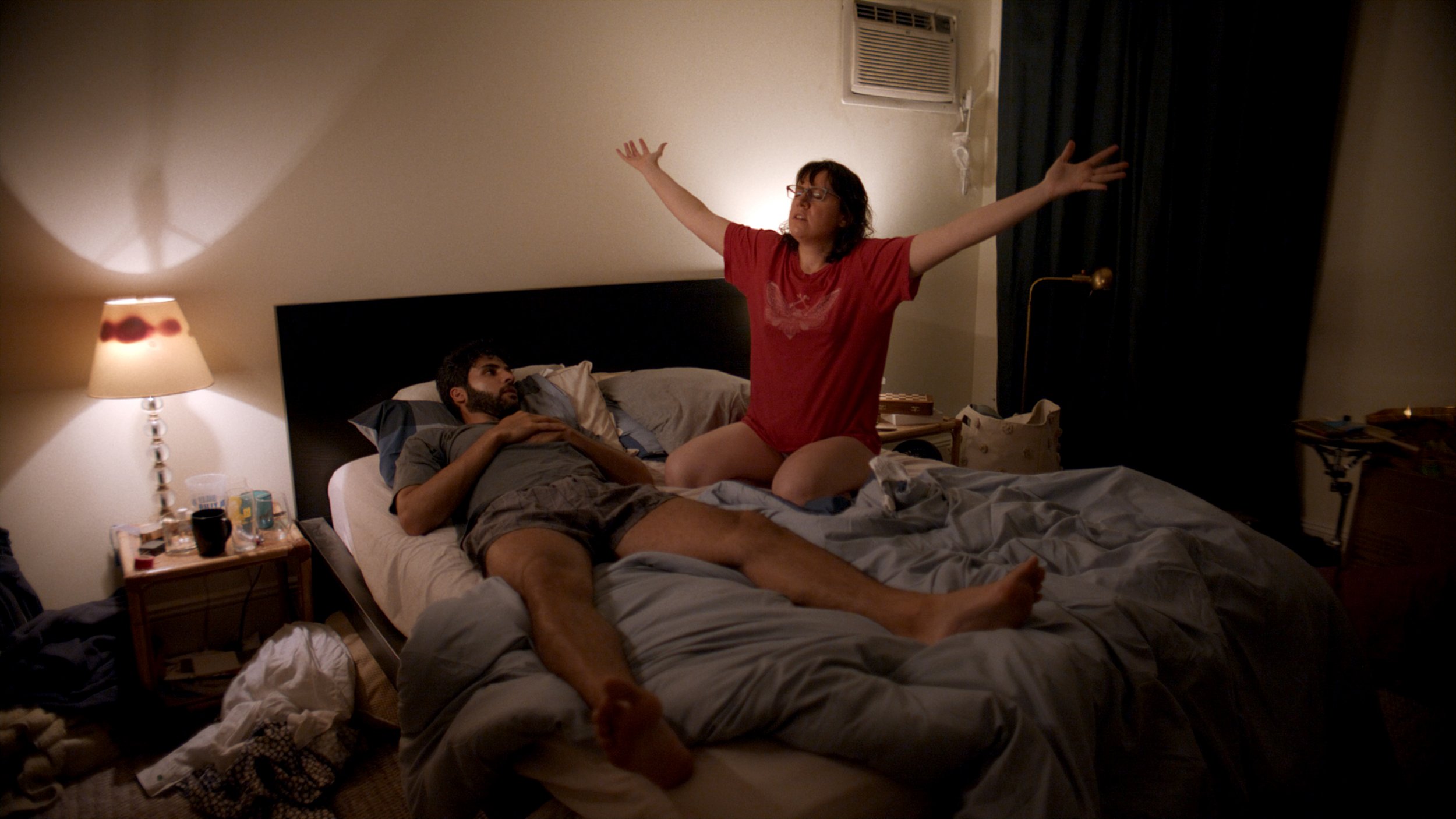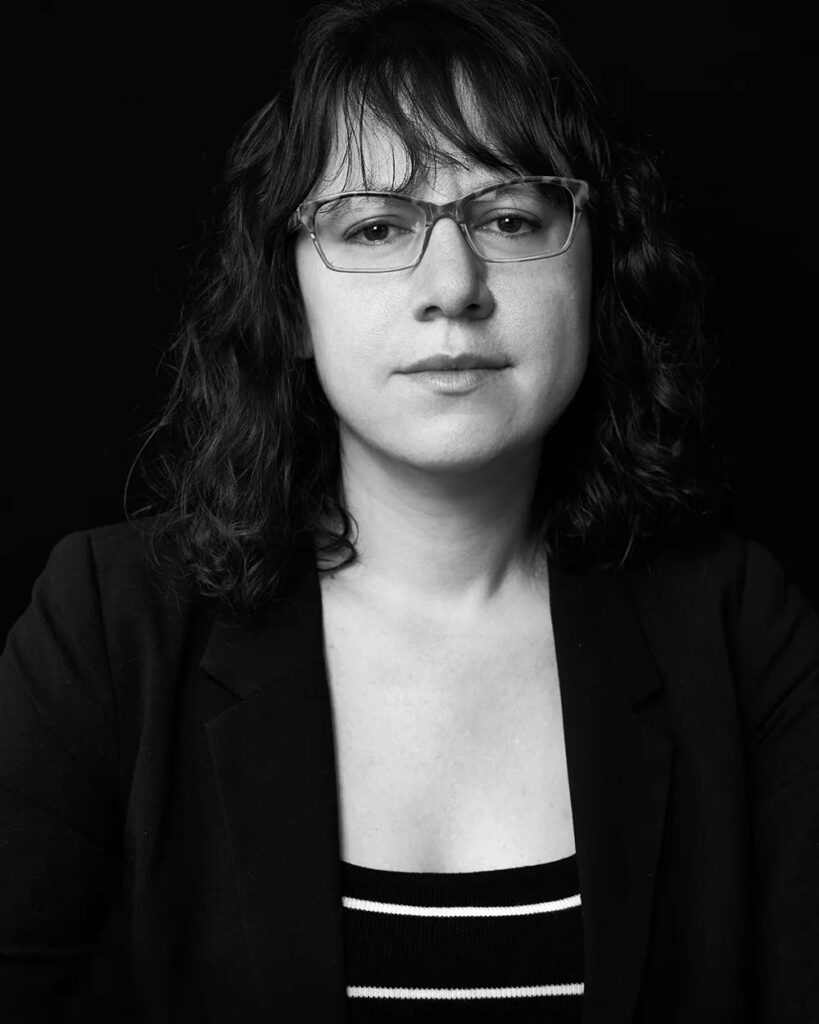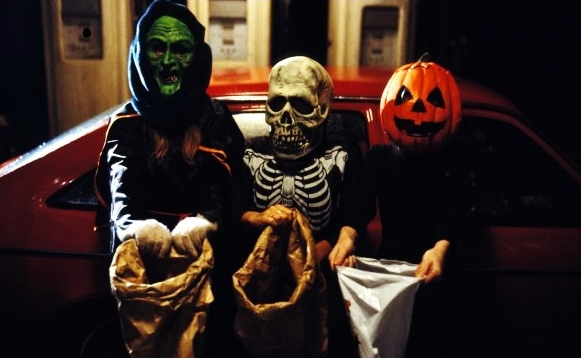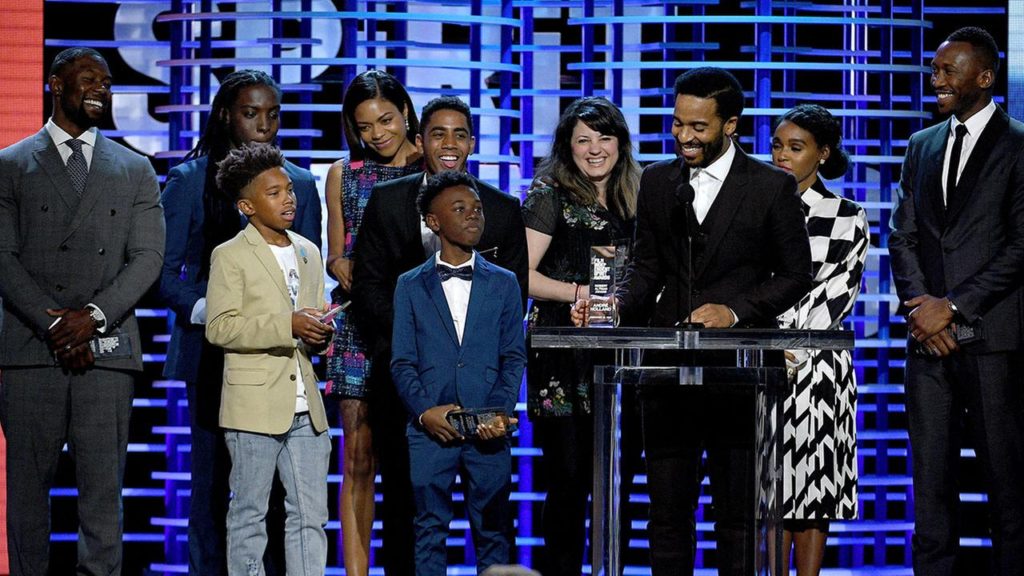JOANNA ARNOW has shared her unique comedic voice through both the page and the screen. As a fiction writer and comic artist, Arnow’s work has appeared in Glimmer Train Press and Popula. She’s acted in films including Chained for Life and F***ed in the Head, and as a writer/director/editor, she found success with the feature documentary i hate myself:) and the short films Laying Out and Bad at Dancing (which won the Berlinale Silver Bear Jury Prize). Arnow has recently received similar accolades for her narrative feature debut, THE FEELING THAT THE TIME FOR DOING SOMETHING HAS PASSED.
Arnow’s mosaic-style comedy participated in Berlinale Script Station, Gotham Week, and When East Meets West. The completed film premiered at the 2023 Cannes Directors’ Fortnight before going on to screen at the Toronto International Film Festival, New York Film Festival, and AFI Fest (where it screened as a SAGindie-sponsored title). The film also landed Arnow a Someone To Watch Award nomination at the 2024 Film Independent Spirit Awards. Executive produced by Sean Baker, The Feeling That the Time for Doing Something Has Passed follows Arnow’s Ann through chapters of her sex life, work life, and family life in New York. The film also stars Scott Cohen, Babak Tafti, Michael Cyril Creighton, and Alysia Reiner.
Magnolia Pictures will release The Feeling That the Time for Doing Something Has Passed in theaters on April 26. We spoke with actor/writer/director/editor Joanna Arnow about bringing her first scripted feature to the screen.
——
COLIN McCORMACK: Did you write this script in a linear chronological fashion or was the writing more episodic?
JOANNA ARNOW: I started writing it chronologically for the first bit, but then realized I wanted to write faster and order it later. So I wrote as many short scenes as I could, drawing on personal experience, and probably had around 250 pages of the first non-chronological pass. Then I shaped it after that.
CM: How long was that time frame from 250 pages to a “deliverable” draft?
JA: I started writing in May 2019 and had my first workshop with my scriptwriters’ group in January 2020. So it was fairly far along by then. In between — before I did a second draft shaping the scenes into a specific order — I developed this awful Excel document that I absolutely hated making that charted each of the scenes, their themes, their main conflicts. They were color-coded, it discussed their length, and it was a pain to make. Then after that, I did an intuitive pass because I knew how I wanted to shape the different sections operating with different formal rules. I do think that Excel document was helpful, but I like the hands-on part better.
CM: As painful as it was, is the Excel document something you think you’ll continue with your future writing?
JA: Probably. You can’t avoid them [laughs]. Especially if you’re dealing with 300 tiny little scenes, you’ve got to track them somehow.
CM: You went through various Labs while developing the script and the film. Were there any lessons or guidance or even relationships that were built that stand out from any of the programs you worked with?
JA: I did Berlinale Script Station and spent some time talking about the script with my mentor there, Franz Rodenkirchen. He gave a lot of really great feedback. It was wonderful to get that level of feedback while I was still developing the script. And he did also say, “Let no one ever convince you to change the title.” So I really appreciated that and anytime I got any feedback that it was too long or whatever, I was just like, “No, I was already told not to let anyone [change it].” I don’t think I would have anyway, but I appreciated that vote of confidence.
CM: Did you have to mentally separate your acting hat versus putting on the writer/director hat? Were those always working in tandem, the acting and the directing?
JA: To be able to act and direct, I was very lucky to have a wonderful team of collaborators. I would get a sense of how it was going while in the scenes and would watch the takes back as well. I also had a couple of acting coaches on set one at a time, one of whom, Hye Yun Park, I’d worked with on my previous short Bad at Dancing. We studied in the same acting class back in the day and had a lot of the same techniques. And as well we had a new collaborator in [acting coach] Esy Casey. They were a pair of eyes on my performance and would reflect back to me what they saw. And we rehearsed together and discussed the approach and I would give them my notes of what I would want to try. That was really wonderful to have their support and creative eyes in the process.
CM: You have a rather large cast. How was the process of finding all of these co-stars to help fill out the film?
JA: A bunch of folks were suggested through friends. One of our film’s producers Pierce Varous suggested Scott Cohen, who is someone he had worked with previously, for the Allen part. I thought he would bring out the role’s complexity and comedy. He’s quite an interesting presence. Babak was suggested by a different friend. There’s just so much life and thought in his performance, I was excited about him for the Chris role especially after we Zoomed. We also worked with the casting director Charlotte Arnoux, who found a lot of the roles through self-tapes and suggested ideas and was a terrific partner in the casting. Then some folks — like my parents [Barbara Weiserbs and David Arnow], who were playing the parents in the film, and a couple of friends like Shuchi Talati and Kent Bassett — were first-time actors who I was excited to have. [Having] a mix of both first-time actors and professional actors, I hoped it would give the film a richer fabric and create a world with different textures and more authenticity.
CM: It’s not the first time you’ve directed your parents, but how did this time differ from the previous one?
JA: They were in my previous feature, i hate myself:), but that one’s a documentary so I don’t consider their on-camera appearances as me directing them. I did a cinematography test shoot for framing and pacing fairly early on in the process and they were just so great in that that I thought they would be right for the parents’ roles. I hoped that casting them would give the film more authenticity and specificity.
CM: You cover a lot of ground and there are a lot of locations in the film. With an indie budget, how did you juggle so many moves to different locations?
JA: It was definitely tricky. When I was looking for locations I was always trying to find places that I could combine and cheat as more than one space. For example, for each bar we shot in we probably got five different “bars” out of that. We had brilliant producers and production team and they did quite a lot with a little, especially Graham Swon who’s worked at budgets of this level quite a bit before. And Daniel Ryniker and others were incredible at making it all happen.
CM: You obviously did a lot of work in the writing process to track all the various storylines and scenes. Did you play around a lot in the edit with reshaping the film?
JA: It definitely changed somewhat in the edit but it keeps a lot of the original shape of the script. Unfortunately, we had to lose a lot of scenes and even characters that I loved to shrink this down. If we laid out everything we shot in the timeline, it would have been a four-hour cut. My first cut was two hours, but to get it from two hours to the 88 minutes we landed on, we had to lose a lot. I wanted the film to retain its mosaic feel, so it was a balance. Scenes moved around within their sections but each section has its own set of formal rules, so scenes, except for one, never hopped outside of their intended section.
CM: You premiered in Cannes but then you’ve also gone on to screen all over the world in Germany and Greece and Sweden and India. Has the reaction to the film differed greatly from region to region?
JA: In small ways, but I also don’t sit through the screenings, having seen it so many times myself. I only really judge by the Q&As. The humor seems to be resonating across the board, which is nice. One of the most recent ones I went to was in Wisconsin. I often get a lot of questions about nudity and what it’s like to act naked. I understand why that’s a matter of interest but to me, the film is about so many other things. It’s always a little bit surprising when that becomes a focal point, so I really enjoyed the people of Wisconsin choosing to focus on other things. It was a nice change [laughs].
CM: What’s next for you?
JA: I’m pitching a few new projects around and working on the development of new scripts. I’m available to hire as an actor or editor as well!

__
We want to thank Joanna for talking to us about THE FEELING THAT THE TIME FOR DOING SOMETHING HAS PASSED. Learn more about the film at thefeelingmovie.com.
This interview has been edited for clarity and length.
If you’re an independent filmmaker or know of an independent film-related topic we should write about, email blogadmin@sagindie.org for consideration.




